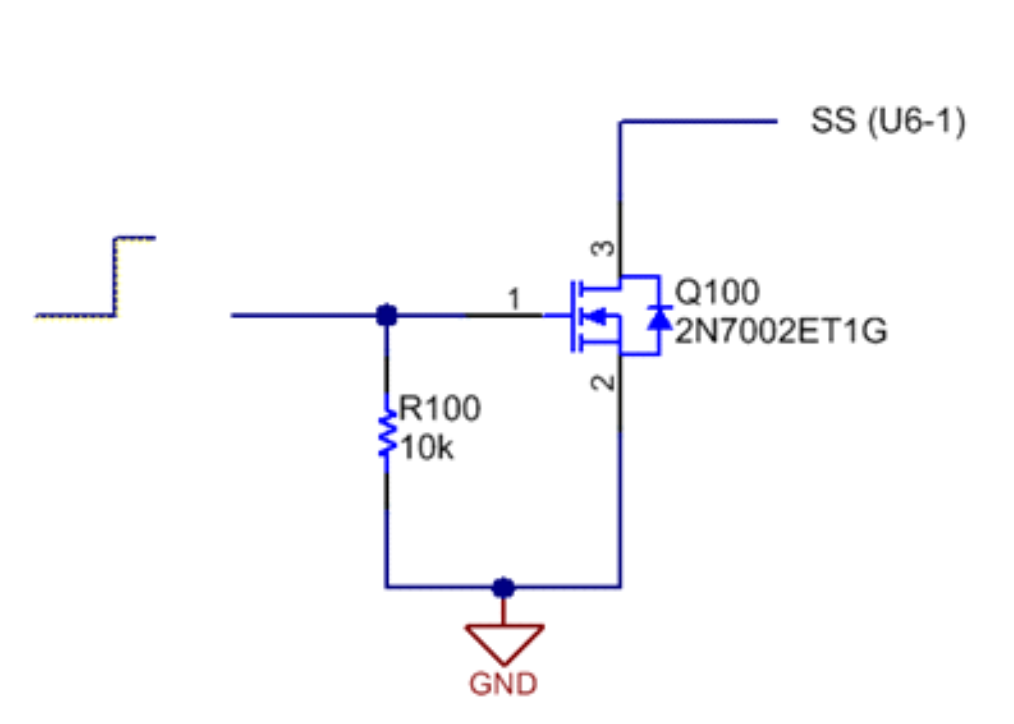SLVU944B October 2015 – October 2020 TPS7H1101-SP
3.3.10 Enable and Disable
EVM can be disabled via pulling the enable pin low via shorting JMP7-1 (Enable) to JMP7-2 (GND). Enable pin is tied high to VIN via R24 ( 20 kΩ) resistor, thus keeping the EVM enabled.
Alternately, EVM can also be disabled via pulling SS pin (U6 pin 1) low via an external circuit comprising of 2N7002 MOSFET as shown in Figure 3-11. A high signal at the gate of Q100 will discharge the SS pin and disable the device.
 Figure 3-11 Disabling the LDO via Soft-Start Pin
Figure 3-11 Disabling the LDO via Soft-Start Pin